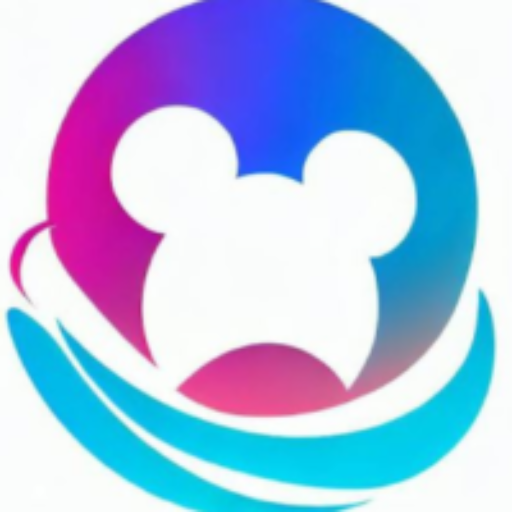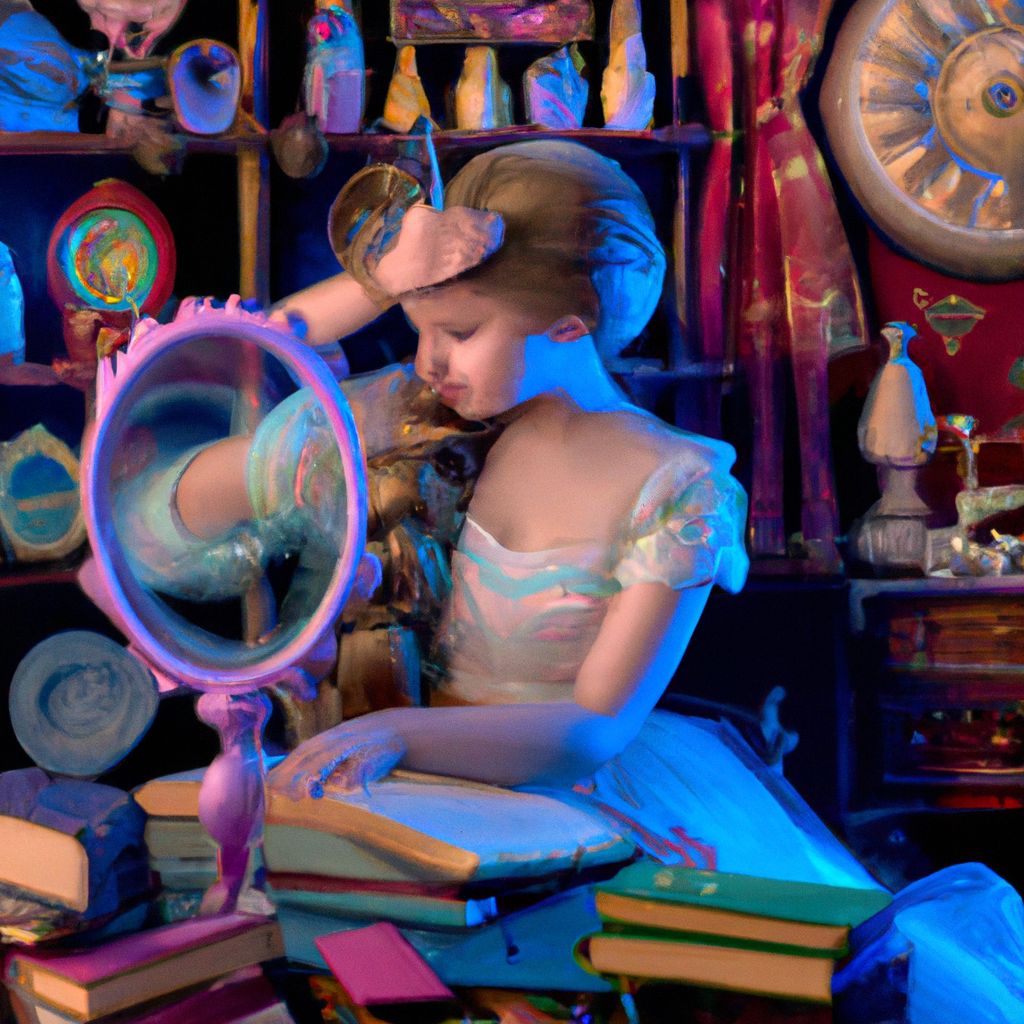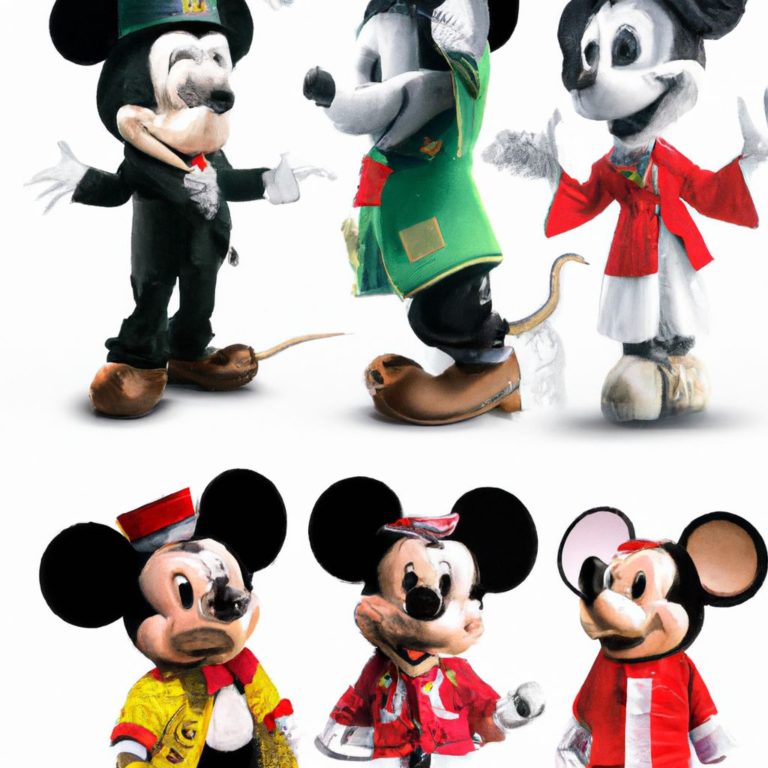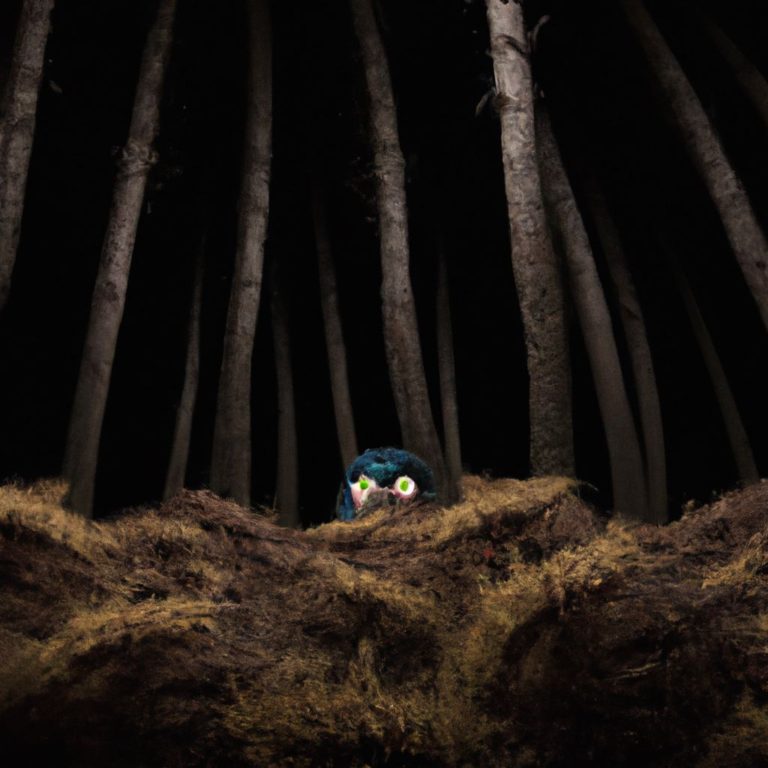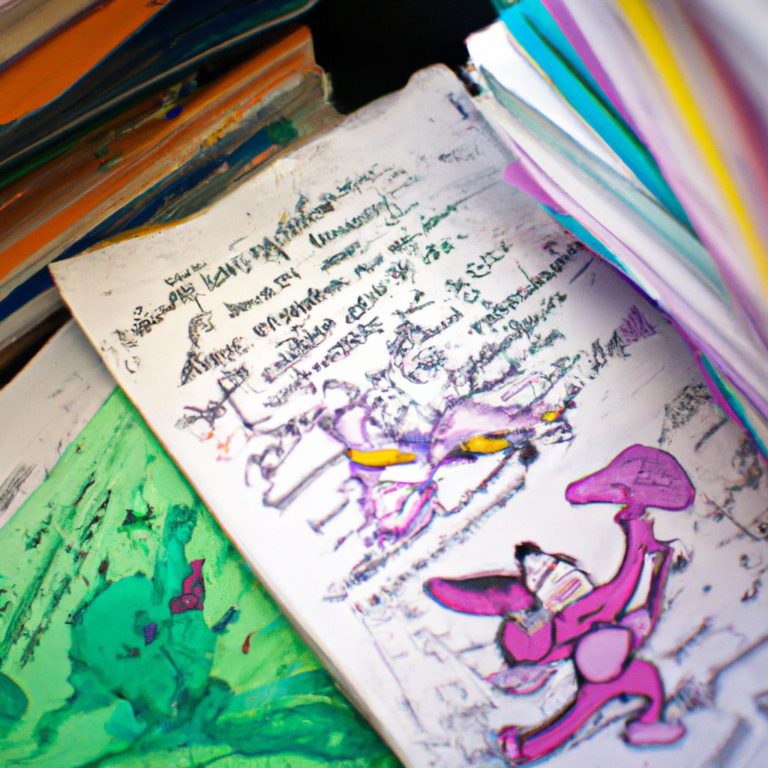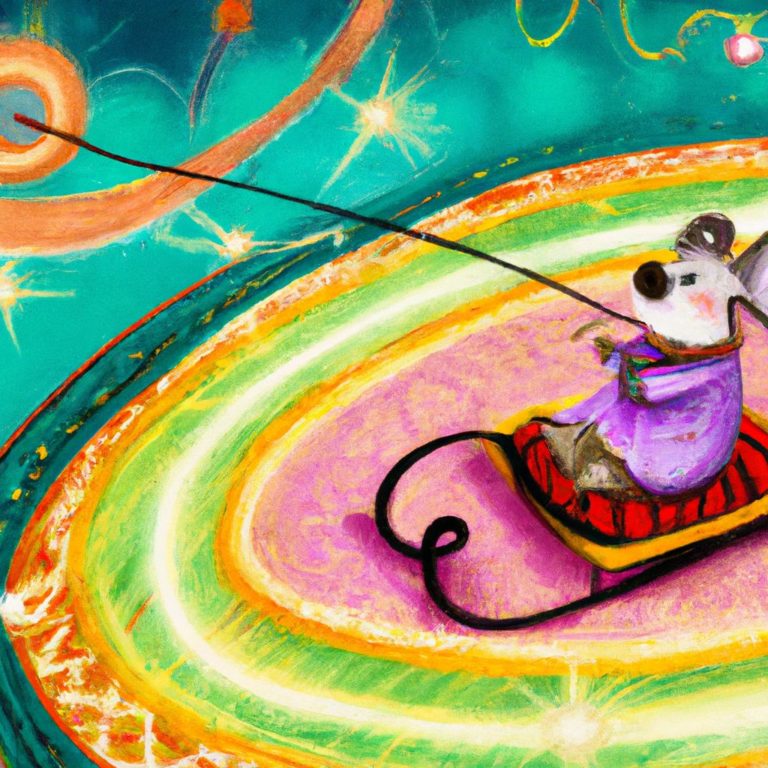Hidden Messages In Disney Movies
- 100 Disney Facts That Might Surprise You - June 24, 2023
- Secrets Of Disneyland Attractions - June 24, 2023
- Real Life Inspirations Behind Disney Movies - June 24, 2023
The Magic Behind Disney Movies
To uncover the magic behind Disney movies and unravel the hidden messages within, delve into the section exploring the power of visual storytelling. Discover how the captivating visuals and intricate details in Disney films convey powerful messages. Uncover the subtle subliminal cues and thought-provoking symbolism that enrich the viewing experience.
The Power of Visual Storytelling
Visual storytelling has a remarkable power that captivates audiences and leaves a lasting impact. It is the art of using images and visuals to communicate a narrative. This evokes strong emotions and engages viewers in a unique and memorable way.
Visuals are an essential component in storytelling. They create a visual language that transcends barriers of language. This helps simplify information and make it accessible to a wide range of audiences.
By combining colors, shapes, and visuals cues, complex topics can be understood with ease. Carefully chosen visuals for each part of the narrative enhances the story’s message. This can be through illustrations, animations, or cinematography.
Incorporating visual metaphors adds another layer of depth to the storytelling experience. This stimulates imagination and enables viewers to relate on a personal level.
Effective use of pacing and timing is also crucial. This impacts how an audience perceives and interprets the story. Proper timing can create tension, suspense or humor.
By harnessing the power of visual storytelling through visuals, metaphors, and timing; filmmakers can create compelling narratives. This resonates with audiences long after they leave the theater or finish watching at home. Experimenting with different techniques can unlock new ways to engage viewers.
Unearthing Disney’s Hidden Messages
To uncover Disney’s hidden messages, delve into the section “Unearthing Disney’s Hidden Messages.” Discover the world of symbols and metaphors in Disney movies, and unravel the intriguing realm of subliminal messages hidden within the films. Get ready to explore the depth and meaning behind the beloved characters and stories.
Symbols and Metaphors in Disney Movies
Animals feature prominently in Disney movies, representing human characteristics or societal issues. For example, Simba in ‘The Lion King’ symbolizes the journey from innocence to maturity, while Scar stands for greed and corruption.
Themes of good versus evil, love, and the triumph of righteousness are explored through classic archetypes, such as princesses, witches, and knights. Colour symbolism is also used to convey emotions – red often illustrating passion or danger, blue representing purity or tranquility. Visual motifs, like the iconic glass slipper in ‘Cinderella’, reflect specific concepts.
Different cultures and generations interpret the same symbols and metaphors differently. To understand the hidden messages in Disney movies, viewers should consider the context in which they were made, explore concept art and interviews with directors, and reflect on their own experiences.
By delving into the world of symbolism and metaphors, Disney fans can discover a deeper appreciation for these classic stories.
The Use of Animals as Allegories
Disney movies are renowned for their captivating tales and iconic characters. They also often use animals as allegories, allowing them to portray deeper messages through these characters. Let’s explore how Disney does this effectively!
The lion is often used to symbolize courage and leadership. An example of this is Simba from “The Lion King,” who embarks on a journey to reclaim his throne, teaching viewers the importance of bravery and responsibility.
The fox is often portrayed as cunning and sly. This is seen in Robin Hood from “Robin Hood,” showcasing his cleverness and resourcefulness in overcoming obstacles.
Disney also uses various other animals to convey messages. From wise owls to loyal dogs, these characters serve as relatable symbols that appeal to all ages.
For Disney to make effective use of these animal allegories, the characters must be accurately and consistently portrayed throughout the story. Character development is also important, as it helps viewers to form an emotional connection with these characters, increasing the impact of the deeper messages.
So, now we know that Disney princesses also hold hidden meanings – talk about fairy tale stress!
Hidden Meanings in Disney Princesses’ Stories
Disney Princesses’ Stories are more than just entertainment; they possess secret meanings that can be interpreted in various ways. Here are some captivating insights into these tales.
- Brave Hearts: Many Disney Princesses depict courage and determination, teaching watchers the importance of perseverance in hard times. Think Cinderella’s tenacity and Ariel’s ambition. These stories emphasize never giving up.
- Smashing Stereotypes: Disney Princesses defy traditional gender roles by featuring strong female characters. For example, Mulan and Merida demonstrate that girls can be warriors and leaders, to inspire young girls to embrace their strength.
- Love Overlooks Appearance: In many Disney Princess stories, love prevails despite physical appearance or external beauty. Belle falls in love with the Beast’s inner kindness while Snow White finds true love through a prince’s kiss. These tales emphasize real connections beyond looks.
- The Worth of Self-Exploration: Through many Disney Princesses’ journeys, a recurrent theme emerges—self-discovery. Whether it’s Rapunzel exploring her identity outside her tower or Elsa accepting her powers, these stories encourage watchers to embrace their uniqueness and discover their true potential.
Plus, there are other concealed details within Disney Princess stories waiting to be revealed—a trove of symbolism and knowledge for those willing to investigate. For example, the value of family bonds is showcased in films like “Moana” and “Frozen,” teaching kids about loyalty and love.
Did you know that some Disney films are inspired by ancient fairy tales? For instance, “The Little Mermaid” draws upon Hans Christian Andersen’s tale with the same name. It’s mind-blowing how these films merge classic storytelling with modern interpretations.
Disney’s hidden messages are so stealthy, they make the Illuminati look like newbies!
Subliminal Messages in Disney Films
Subliminal messages in Disney films have been a hot topic of debate. They can be hard to spot, but they are intriguing. Let’s explore the key points.
- Hidden Sexual References: Disney films may contain subtle sexual references. For example, in “The Little Mermaid,” a phallic symbol appears in the castle’s spires.
- Alleged Racial Stereotypes: Some Disney movies have been accused of featuring racial stereotypes, such as the crows in “Dumbo” and the Siamese cats in “Lady and the Tramp.”
- Embedded Messages: Disney often includes morality lessons and values in their films. In “The Lion King,” there is a scene where dust particles spell out “SFX,” an homage to special effects animators.
- Visual Illusions: Disney animators may hide images or illusions in their films. In “Hercules,” some viewers claim to have spotted Mickey Mouse ears.
- Easter Eggs: Pixar films, produced by Disney, often feature hidden references to other movies or characters. For instance, Sulley from “Monsters Inc.” appears as a carved figure in “Brave.”
These messages add an extra layer of excitement for viewers, but it is important to remember Disney filmmakers may not have intended them. Plus, many of these alleged subliminal messages have been debunked or explained as coincidences. So, we should approach them with skepticism and not jump to conclusions.
As an interesting aside, in 1999, during the release of “Toy Story 2,” a scene was accidentally deleted. Luckily, it was restored with only hours remaining. Mickey Mouse has a rebel side, who knew?!
Controversial Messages and Conspiracy Theories
In the world of Disney, rumours of hidden messages have always been abound. Controversies and conspiracy theories spark curiosity amongst fans, leading to debates about the meanings behind some of our favourite animations.
- One such claim is the alleged sexual subliminal messages in certain Disney films. Claims of inappropriate images or references hidden within scenes have raised concerns about their impact on younger viewers.
- Theories suggest that Disney movies promote certain political agendas, using the plot or character development to address social issues indirectly.
- Cultural appropriation is also a topic of discussion. Critics argue that Disney may depict cultures inaccurately, perpetuating stereotypes instead of celebrating diversity.
- Gender roles and beauty standards are also said to be hidden messages in Disney films. Some argue that the movies adhere to traditional gender norms and present unrealistic expectations of physical appearance.
These theories must be approached with caution. While some hidden messages may exist, others may be exaggerations or misinterpretations. Exploring these theories allows us to analyse popular culture and engage in meaningful discussions about its influence on society.
To understand the complexity of Disney movies, an open-minded attitude is crucial. This way, we can appreciate the entertainment value of these animated films, as well as their potential societal impact.
So, next time you watch a Disney film, take a moment to dive deeper into its themes and narratives. You never know what hidden messages you might uncover beneath their enchanting surface. Embrace the opportunity to explore the fascinating world of Disney, and let your imagination run wild!
The Impact of Subliminal Messages on Viewers
Subliminal messages in media have been a topic of interest for researchers for decades. These covert cues, found in movies, ads and more, can affect our thoughts, actions and outlook without us even noticing.
Let’s look at a real-life example: Disney’s “The Lion King.” A cloud formation briefly formed into the word “sex” – though Disney denied any deliberate intent, the scene sparked controversy.
Below is a table of instances of subliminal messages in popular media, and their effects:
| Media | Content | Impact |
|---|---|---|
| Disney’s ‘The Little Mermaid’ | Phallic-shaped castle spire briefly shown | Sparked outrage and led to subsequent editing |
| Coca-Cola Advertisements | Hidden images of smiling faces in ice cubes | Subtle positive association with the product |
| Fight Club Movie | Brief flashes of single frames during fight scenes | Increased arousal and engagement among viewers |
These examples show how subliminal messages can impact viewers. While some say these hidden cues have minimal influence, others think they can control our subconscious minds.
Research on the long-term effects of subliminal messaging is limited. However, acknowledging and examining these hidden messages can help us make informed choices.
Be aware of subliminal messages and their potential impact. Be vigilant, question the media you consume, and arm yourself with knowledge. It’s time to uncover the secrets behind these covert influences and take back control of your mind.
The Influence of Disney’s Hidden Messages
To shape values and beliefs in children, and to explore the societal effects of Disney’s subliminal messages, this section delves into the influence of Disney’s hidden messages. Delving into the impact of these messages, we unravel the intricate ways in which Disney films can shape young minds and affect the wider society.
Shaping Values and Beliefs in Children
Shaping the values and beliefs of children is serious business. Disney has the power to influence them, with its movies and characters. Its stories show bravery, friendship, and perseverance. For instance, Simba in “The Lion King” learning about responsibility. Or Mulan breaking gender stereotypes in “Mulan”.
But beyond the surface, there are more hidden gems. Disney often shows characters of different backgrounds in a positive light, teaching kids to embrace differences. It also emphasizes family and love, to encourage kids to have healthy relationships with their own families.
And Disney exposes kids to different cultures around the world. From Agrabah in “Aladdin” to New Orleans in “The Princess and the Frog”, these films introduce young viewers to various settings, traditions, and customs.
Parents must be aware of Disney’s influence. By engaging in conversations, they can address any concerns or misconceptions. Open discussions help ensure children receive the right messages.
Don’t miss out on this opportunity! Utilize Disney’s hidden messages as a tool for teaching important life lessons. With Disney, parents can shape their children into compassionate, open-minded individuals. Embrace the magic!
Gender Roles and Stereotypes Portrayed
Disney movies have had a huge effect on society, with secret messages that shape our views on gender roles and stereotypes. These quiet depictions in well-known films are essential in influencing how we view ourselves and others.
Let’s examine certain unique cases where these themes are portrayed:
| Movie | Gender Roles and Stereotypes Portrayed |
|---|---|
| Cinderella | The princess needs to be rescued by a prince, suggesting women require saving. |
| Mulan | Mulan breaks conventions by dressing as a man to fight in the army, challenging the limited idea of what females can do. |
| Beauty and the Beast | Belle, the intelligent heroine, looks past appearances to find the good in others, underlining the importance of inner beauty. |
Though these examples display some progress in breaking gender stereotypes, it’s vital to note that Disney isn’t always progressive. Princess stories usually show a damsel in distress waiting for her Prince Charming.
Disney has acknowledged their influence and tried to create more diverse characters. For instance, “Frozen” has strong female leads who don’t depend on men for happiness or success. This shift shows Disney’s dedication to handle criticism and bring about positive change.
Therefore, Disney movies have an immense effect on how we see gender roles and stereotypes. While there have been steps towards breaking norms, Disney must keep pushing traditional narratives and give more diverse and empowering representations. By doing so, they can help create a more equitable and inclusive society for the next generation. Grab your popcorn and get ready to uncover a whole new world of cultural references and representations in Disney movies!
Cultural References and Representations
Disney’s films are known for their hidden messages and cultural references. These elements add depth and meaning to the stories. From nods to pop culture icons to representations of social issues, Disney’s hidden messages have a powerful influence.
Let’s take a look at some examples:
| Film | Cultural Reference | Representative Element |
|---|---|---|
| “The Lion King” | Shakespeare’s “Hamlet” | Simba as Prince Hamlet |
| “Mulan” | Chinese folklore | Mulan as a warrior |
| “Frozen” | Hans Christian Andersen’s “The Snow Queen” | Elsa with ice powers |
In “The Lion King,” elements from Shakespeare’s “Hamlet” are used. Simba mirrors the journey of Prince Hamlet. This reference allows viewers familiar with the literature to appreciate the parallels.
“Mulan” incorporates Chinese folklore. It depicts Mulan as a warrior who disguises herself as a man. Disney pays homage to Chinese traditions and introduces diverse narratives to mainstream media.
“Frozen” is influenced by “The Snow Queen.” Elsa has ice powers resembling those of the Snow Queen. This reference links classic literature and modern animation while adding intrigue to Elsa’s character.
These examples demonstrate how Disney strategically includes cultural references in its films. Here are some suggestions to enhance this aspect:
- Expand on lesser-known cultural references.
- Collaborate with global storytellers.
- Provide educational resources.
By implementing these suggestions, Disney can continue using hidden messages and cultural references effectively. It can foster cross-cultural appreciation and encourage engagement with diverse narratives.
The Societal Effects of Disney’s Subliminal Messages
Disney’s subliminal messages have had a huge effect on society. They are cleverly hidden in movies and merchandise, influencing people’s minds for years. The social impacts range from changing culture to spreading stereotypes and boosting consumerism.
Young kids are especially vulnerable to subliminal messages. Through Disney characters, they learn certain traits and behaviours from a young age, which they copy and internalize. This can lead to reinforcing gender roles, beauty standards, and societal pressures.
Furthermore, Disney’s subliminal messages shape cultural norms. For instance, princesses being presented as needing a prince to save them, reinforces traditional gender roles and reduces women’s power.
In addition, Disney’s subliminal messages fuel consumerism. Through marketing and merchandising, Disney creates an emotional bond with their audience, resulting in more buying of their products.
One story illustrates the power of Disney’s hidden messages. In 1995, there was uproar over a scene from “The Lion King,” supposedly containing inappropriate words whispered during a storm. It was later explained as a misunderstanding, but this event showed how carefully crafted subliminal messages can have a big impact and influence public opinion.
Disney’s subliminal messages are so effective that even when we buy groceries, we hum ‘Hakuna Matata’ instead of worrying about the bill.
Impact on Consumer Behavior and Pop Culture
Disney’s hidden messages have a huge influence on consumer behaviour and pop culture. Their subliminal storytelling techniques can sway individuals’ buying decisions and shape social standards. Through delightful characters and bewitching stories, Disney creates an intense bond with its viewers, causing them to form strong connections to the brand. With their cunning marketing plans, Disney has become a cultural sensation that keeps on forming trends in movies, fashion and entertainment.
Moreover, Disney’s hidden messages transcend ages, appealing to both children and adults who grew up with these tales. By tapping into nostalgia and bringing back fond childhood memories, Disney uses consumers’ emotions to encourage engagement and breed brand loyalty. These messages often carry positive values such as love, persistence and companionship, which further increases their sway on consumer behaviour.
One remarkable aspect of Disney’s hidden messages is how they subtly include moral lessons into their stories. By providing subtle teachings on kindness, courage and mercy through relatable characters and thrilling plots, Disney shapes social standards by instilling these values in its viewers from an early age. This subtle educational approach not only adds complexity to their storytelling, but also has a significant effect on forming consumer behaviour and cultural opinions.
A great example of Disney’s hidden messages’ effect is the “Princess Culture” development. The portrayal of princesses in beloved Disney films like Cinderella and Snow White has had a big impact on pop culture. It has changed young girls’ ambitions by demonstrating traditional notions of beauty, romance and happy endings. This occurrence has caused debates about gender roles in society but has also brought forth the empowerment trend within the princess narrative itself.
Though some may criticize Disney’s messages, we can all agree on one thing – Disney has perfected the art of subliminal brainwashing in the most enchanting way possible.
Critiques and Debates Surrounding Disney’s Messages
Critiques and debates on Disney’s messages have sparked many conversations. Let’s dig into some of the key points and arguments these debates have brought up.
One complaint is about gender roles in Disney movies. Critics state that many princesses display passive and submissive behavior, which perpetuates traditional gender stereotypes. They want to see more female characters that are diverse and empowering.
Another matter is Disney’s depiction of different cultures. Some argue that certain Disney movies, such as “Pocahontas” or “Aladdin”, feature cultural stereotypes that are inaccurate or even offensive. They suggest more research and awareness when portraying diverse cultures.
Consumerism that Disney promotes is also a topic of debate. Critics believe that the company’s marketing strategies target children, encouraging materialistic values and excessive consumption.
Despite these critiques, Disney has made efforts to address some of these concerns. They’ve introduced more progressive female characters like Moana and Elsa from “Frozen”, who challenge traditional norms and serve as positive role models. They’ve acknowledged cultural sensitivities by collaborating with consultants from relevant communities during production. And they’re promoting responsible consumerism by incorporating educational messages within their movies, motivating kids to think critically about their desires.
Though debates on Disney’s hidden messages still persist, it’s important for the company to remain open to criticism and actively tackle these issues. When taking into account different views, conducting thorough research and advocating positive values, Disney can create content that both entertains and inspires children while fostering a more inclusive and responsible society.
Unveiling Disney’s Future Path
To understand Disney’s future path and unveil their hidden messages, delve into the sub-sections: The Evolution of Hidden Messages in Modern Disney Films and Addressing Concerns and Taking Responsibility. Each sub-section offers a unique perspective on how Disney has incorporated hidden messages and how they address the concerns associated with them.
The Evolution of Hidden Messages in Modern Disney Films
Text: Disney – creating hidden messages in their films that captivate all ages! Easter eggs have become a signature element, cleverly woven into plots, characters and visuals. Now, Disney pushes the boundaries further, tackling social issues like diversity, empowerment and environmental awareness.
Multi-layered messages offer entertainment for children and subtle commentary for adults. Allowing viewers of any age and background to engage with thought-provoking elements that enrich the cinematic experience.
Next time you watch a modern Disney film – look out for those hidden gems! Don’t miss out on the opportunity to discover something new. Those evil stepmothers still trying to fit into tiny glass slippers, while diverse characters get their happily ever after!
Embracing Diversity and Inclusion
Disney is showing the world the importance of embracing diversity and inclusion. Their initiatives and practices create a space where everyone feels respected. To ensure a wide range of perspectives, Disney hires individuals from different ethnic backgrounds, cultures, genders, and abilities.
In addition, their movies and shows feature actors from different cultural backgrounds, celebrating diversity and encouraging viewers to embrace their unique identities. Disney also provides accessible facilities for individuals with disabilities in its theme parks.
Furthermore, Disney supports LGBTQ+ rights through partnerships with organizations like GLAAD, sending a powerful message of acceptance and equality. They also empower underrepresented voices by providing opportunities for career growth and development.
Disney’s dedication to diversity and inclusion extends into every aspect of their operations, showing other organizations how to foster an inclusive environment. They are teaching kids valuable life lessons – like how to speak to animals, talk to household objects, and the importance of not trusting strangers you meet in the woods.
Conscious Efforts Towards Positive Messaging
Disney is actively promoting positive messages. To achieve this, the company has taken various initiatives and strategies. They empower female characters, focus on inclusivity, address mental health themes, and promote environmental responsibility. They also launch social impact campaigns, incorporate educational elements, and create characters embodying positive qualities.
To further enhance their efforts, Disney can:
- create thought-provoking stories
- showcase real-world heroes
- collaborate with non-profit organizations
- engage in meaningful partnerships
- incorporate interactive elements
- promote diversity among filmmakers
And, to ensure only the best princesses are crowned, Disney will polygraph all princesses in their next animated film.
Addressing Concerns and Taking Responsibility
Disney is proactive when it comes to addressing concerns and taking responsibility. They prioritize the well-being of their audience, and take steps to ensure a safe and enjoyable experience for all.
To further address concerns, they have invested in research and development, seeking innovative solutions that ensure a positive impact on society. Disney also faced criticism over certain portrayals in their films. Instead of ignoring it, they actively engaged with critics and worked collaboratively to address them.
Creating content ethically is a challenge. But if done right, it can be rewarding and save you from a lawsuit!
Ethical Considerations for Content Creation
Content creation is growing rapidly, and ethical considerations are essential to shape its future. Accuracy, privacy, diversity, transparency, and plagiarism are key considerations. Quality and ethical implications must be taken into account.
Accuracy involves delivering accurate information. Privacy is about respecting individuals’ rights. Diversity means representing different experiences. Transparency discloses conflicts of interest. Plagiarism means giving credit to sources.
Disney is leading the way in addressing content creation concerns. They promote accuracy and authenticity in their productions. They embrace diversity through inclusive storytelling. They sprinkle a touch of darkness in their tales, to teach kids the harsh reality of life.
Balancing Entertainment with Responsible Storytelling
Disney knows the importance of entertaining and inspiring audiences. They strive to promote diversity and inclusion in their stories – ensuring every child feels included. Plus, they respect mature themes and do not cross any ethical boundaries.
Disney also goes beyond on-screen narratives. They use their platform to make a difference in society by supporting environmental causes and promoting education.
So, when it comes to balancing entertainment with responsible storytelling, remember to consider your audience’s age range and cultural backgrounds. That way, you can create content that resonates with everyone – while staying true to your values.
